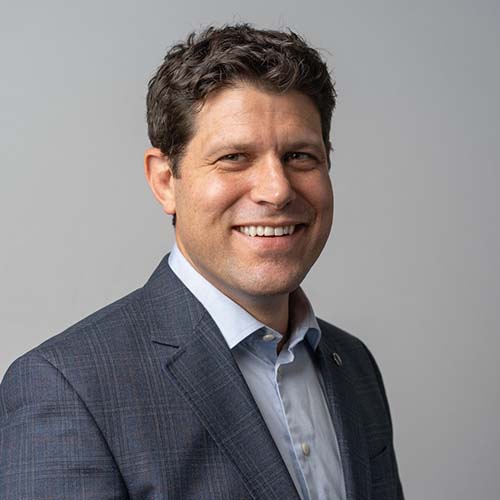Advanced Spine and Orthopedic Surgery for a Pain-Free Life
The landscape of back and orthopedic surgery has actually evolved significantly, providing a range of innovative techniques created to minimize persistent pain and improve client end results. Innovations such as robotic-assisted treatments and minimally intrusive techniques are redefining medical criteria, while regenerative medicine presents brand-new methods for healing. These advancements not just assure decreased healing times but likewise supply customized rehab techniques that accommodate individual requirements. As we check out these transformative approaches, it ends up being necessary to recognize their implications and the real-life experiences that emphasize their efficiency. What might these innovations indicate for the future of discomfort administration?
Understanding Persistent Discomfort
How does persistent pain differ from sharp pain, and what ramifications does this difference have for treatment? Sharp pain usually develops unexpectedly, frequently as a straight result of injury or illness, and serves a safety function, signifying the body to stay clear of additional damage. It generally fixes as the underlying reason heals. On the other hand, chronic discomfort persists beyond the expected duration of recovery, typically lasting for months or also years. This sort of discomfort can arise from numerous problems, consisting of ongoing illnesses, nerve damage, or structural changes in cells.
The effects for therapy are considerable. Sharp pain monitoring usually concentrates on addressing the prompt reason via medicines, physical treatment, or surgical interventions. On the other hand, chronic pain calls for a complex strategy, as it may not reply to standard treatments. Efficient management usually includes a combination of pharmacological therapies, emotional support, and way of life alterations. In addition, understanding the emotional and psychological components of chronic discomfort is essential, as these aspects can worsen the experience of discomfort. As a result, an extensive treatment strategy customized to the individual is important for improving the quality of life for those suffering from persistent discomfort.
Cutting-edge Surgical Strategies
When conventional treatments stop working,The administration of persistent pain usually leads to the expedition of innovative medical methods that can provide relief. Advancements in technology and medical approaches have actually considerably transformed the landscape of back and orthopedic surgery, enabling doctors to resolve complex conditions a lot more properly.
One such technique is robotic-assisted surgery, which improves accuracy and minimizes the threat of difficulties. Furthermore, endoscopic spine surgical procedure has actually emerged as a beneficial choice for treating herniated discs and spinal stenosis.
An additional ingenious strategy is the use of 3D printing in creating customized implants and surgical guides, customized to specific patient anatomy. Collectively, these techniques stand for a standard change in just how chronic pain is handled, offering brand-new hope for those looking for enduring relief.
Benefits of Minimally Intrusive Surgical Treatment
Reducing trauma to the body is a crucial benefit of minimally intrusive surgery, which has actually changed the area of spine and orthopedic procedures. This method uses smaller incisions contrasted to conventional surgical treatment, causing lowered muscle and tissue damage. Therefore, clients experience much less pain post-operation, which can considerably enhance their overall comfort throughout recovery.
One more important advantage is the decrease in blood loss and reduced danger of infection. Smaller sized cuts minimize the exposure of inner structures, therefore lowering the likelihood try here of difficulties. Furthermore, the precision of minimally invasive strategies typically converts to much shorter medical times, which can additionally lower the threats associated with longer treatments.
Patients can likewise anticipate a quicker return to daily tasks and, in numerous instances, a shorter health center keep. This expedited healing process not only enhances person complete satisfaction however can likewise lead to reduced healthcare costs. On the whole, the advantages of minimally intrusive surgery expand beyond immediate surgical outcomes, advertising a faster, much safer, and extra reliable path to recovering movement and lifestyle for people struggling with spinal column and orthopedic conditions.
Rehab and Recovery Strategies

Very early mobilization is vital, as it advertises flow and protects against complications such as deep vein apoplexy. Gradually enhancing task degrees, under professional assistance, aids in bring back stamina and flexibility. Individuals are urged to participate in gentle range-of-motion exercises right after surgical procedure, advancing to more requiring workouts as healing permits.
Pain monitoring is important to recuperation, with a concentrate on carrying out multimodal techniques that might consist of medicines, physical treatment, and alternative treatments such as acupuncture. Education on body technicians and comfort designs is important for stopping re-injury, making sure that people understand exactly how to relocate safely throughout their recovery.
Regular follow-up consultations are needed to monitor progression and make adjustments to rehabilitation procedures. Inevitably, an interdisciplinary technique that integrates medical knowledge, client education and learning, and encouraging treatment promotes a smoother transition back to day-to-day description tasks and improves long-lasting outcomes in spine and orthopedic surgery.

Real-Life Success Stories
Real-life success stories in spine and orthopedic surgical treatment highlight the transformative effect of reliable rehab and personalized treatment. Consider the case of a 52-year-old individual suffering from persistent lower neck and back pain due to a herniated disc. After a detailed evaluation, a minimally invasive discectomy was executed. Post-surgery, the individual participated in a customized rehabilitation program, that included physical therapy and gradual enhancing exercises. Within months, they restored full he said movement and went back to their energetic lifestyle, without pain.
Another motivating example involves a professional athlete with a torn ACL. The medical reconstruction was complied with by a carefully checked recovery program. The athlete dedicated to intensive physical therapy, focusing on toughness and security to sustain a successful return. Extremely, after six months, they not only returned to the area yet likewise attained performance levels going beyond pre-injury status.
These stories underscore the value of personalized therapy strategies and the dedication of both patients and medical care carriers. Each tale functions as a testament to the innovations in spine and orthopedic treatment, showing that with the appropriate technique, a pain-free life is without a doubt possible.
Conclusion
In final thought, progressed back and orthopedic surgical procedure stands for a considerable innovation in the search of a pain-free life. The engaging success tales of people emphasize the transformative impact of these modern-day medical treatments, supplying hope for improved quality of life in people experiencing from persistent pain.
